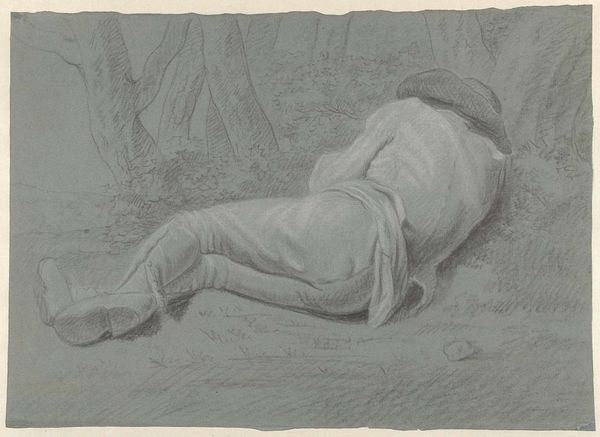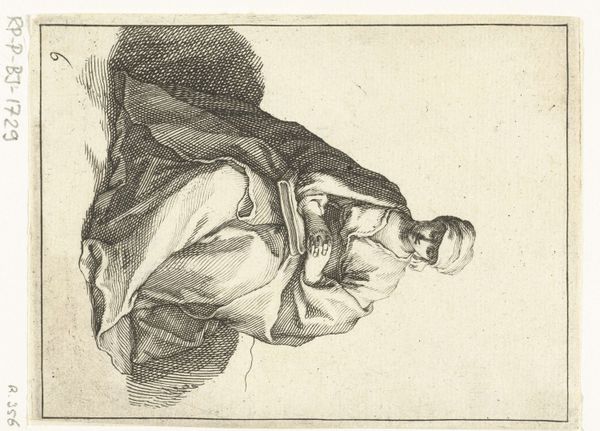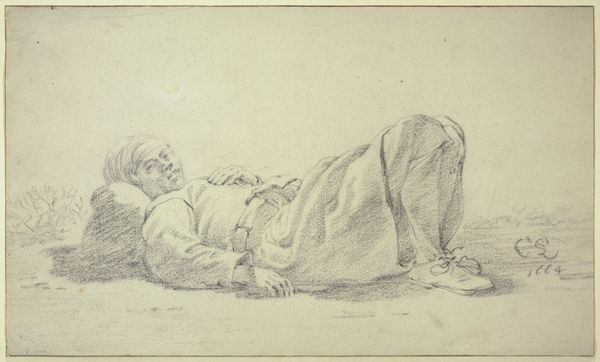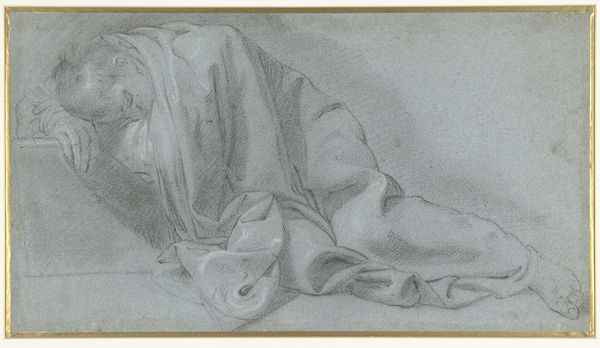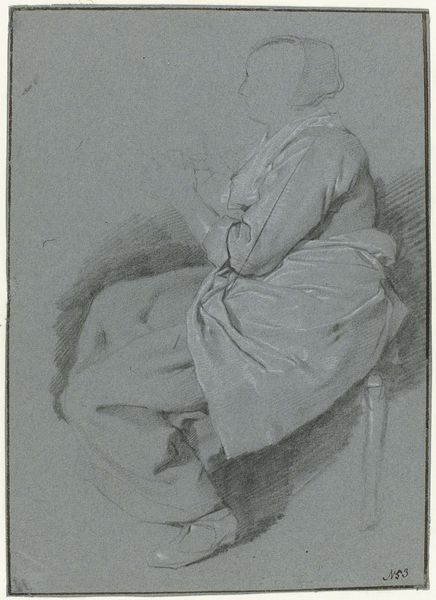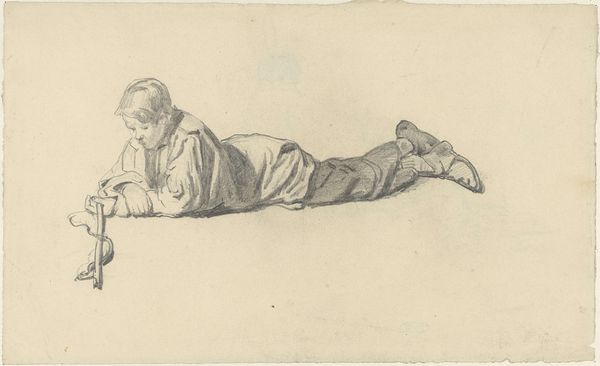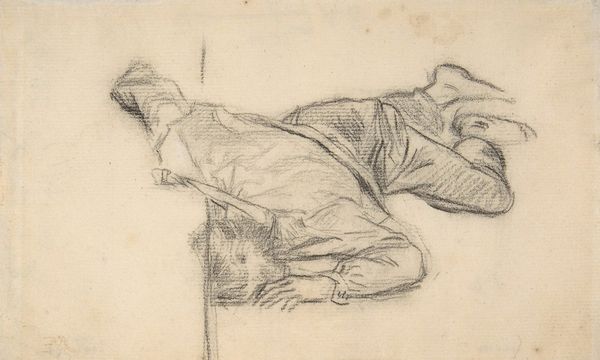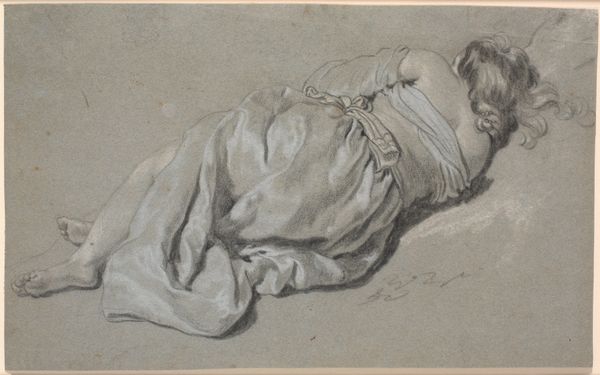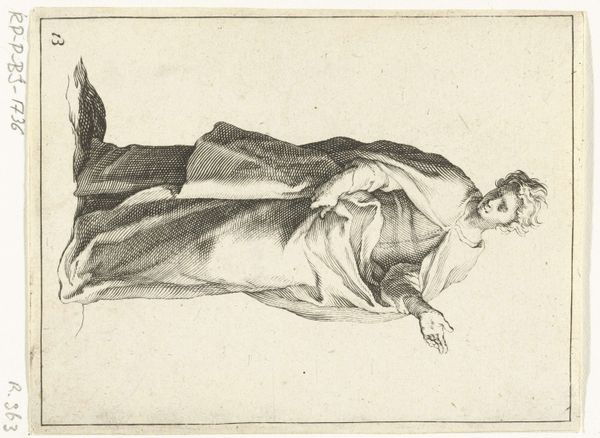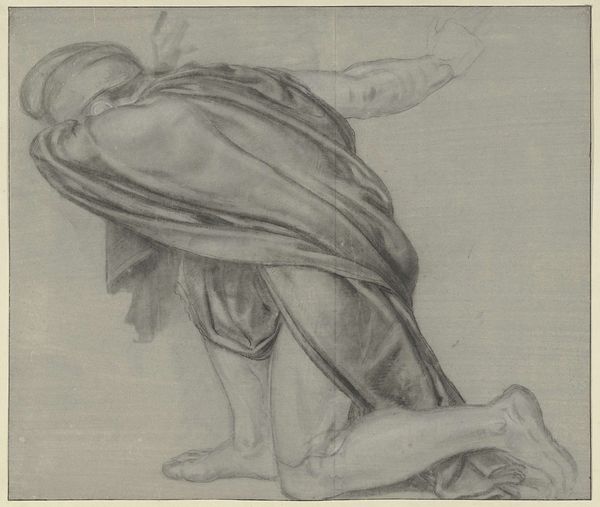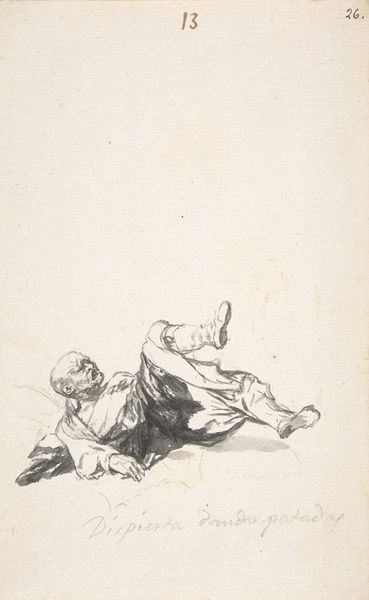
drawing, charcoal
#
portrait
#
drawing
#
dutch-golden-age
#
charcoal drawing
#
pencil drawing
#
portrait drawing
#
charcoal
#
realism
Dimensions: height 197 mm, width 264 mm
Copyright: Rijks Museum: Open Domain
Editor: This is "Slapende man" (Sleeping Man) a charcoal drawing made in 1658 by Cornelis Saftleven. It has a very intimate quality to it. I’m struck by how simply he captures the vulnerability of sleep. How do you see it? Curator: It's an interesting piece when considering purely its formal elements. Notice how the artist uses chiaroscuro—the contrast of light and shadow—not to create drama, but rather to flatten the figure, almost abstracting the contours. Consider how this echoes a concern with form prevalent throughout art history. Editor: That’s interesting; I hadn't thought of it in terms of flattening. What does that abstraction do for the viewer, would you say? Curator: Precisely. It directs our attention to the interplay of line and texture. Look at the varied densities of the charcoal, creating a tapestry of tonal values that suggest depth while simultaneously denying it. This deliberate tension asks us to contemplate the inherent properties of the medium itself. Do you perceive other formal elements creating tension? Editor: Well, now that you mention the tension... perhaps the somewhat awkward angle of the feet? They don't quite recede naturally into space. It contributes to the sense of unease, even in this seemingly peaceful scene. Curator: Indeed. And the almost complete obscuring of the face directs attention instead to the texture of the clothing. Saftleven prompts us to consider drawing, and portraiture, beyond mere representation. Editor: I see now! The focus on the lines and shapes transforms a simple image of a sleeping man into a study of form. I'll definitely look at drawings differently going forward. Curator: Precisely. This formal analysis highlights how we might interpret familiar imagery to generate an array of unexpected conclusions.
Comments
No comments
Be the first to comment and join the conversation on the ultimate creative platform.
